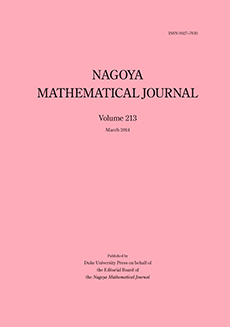Abstract
For a real valued periodic smooth function $u$ on $\R$, $n \ge 0$, one defines the osculating polynomial $\varphi_{s}$ (of order $2n+1$at a point $s \in \R$ to be the unique trigonometric polynomial of degree $n$, whose value and first $2n$ derivatives at $s$ coincide with those of $u$ at $s$. We will say that a point $s$ is a clean maximal flex (resp. clean minimal flex) of the function $u$ on $S^{1}$ if and only if $\varphi_{s} \ge u$ (resp.\ $\varphi_{s} \le u$) and the preimage $(\varphi-u)^{-1}(0)$ is connected. We prove that any smooth periodic function $u$ has any smooth periodic function $u$ has at least $n+1$ clean maximal flexes of order $2n+1$ and at least $n+1$ clean minimal flexes of order $2n+1$. The assertion is clearly reminiscent of Morse theory and generalizes the classical four vertex theorem for convex plane curves.
Citation
Gudlaugur Thorbergsson. Masaaki Umehara. "A global theory of flexes of periodic functions." Nagoya Math. J. 173 85 - 138, 2004.
Information




